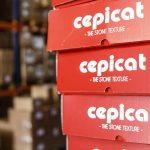In the realm of surface refinement, one tool reigns supreme—grit material in its abrasive or brush form. Abrasives and brushes have become indispensable in countless industries, harnessing their unique properties to shape, polish, and transform various surfaces. In this blog article, we embark on a journey to explore the extraordinary world of abrasives and brushes, uncovering the exceptional qualities of different grit materials.

- Silicon Carbide: The hardness of black silicon carbide is between oxide alumina and diamond. It has high mechanical strength, stable chemical properties, high thermal conductivity, low thermal expansion coefficient, good wear resistance, and certain electrical and thermal conductivity. The base material of the bristles is a nylon heavily impregnated with abrasive SiC particles. During manufacturing, the individual filaments are specially treated to resist thermal aging. Made from high-end engineering polymers PA 6.10 and PA 6.12 these items are used in a multitude of both wet and dry applications, including steel, hard metal and for textile structuring.
- Diamond: Minerals are assigned a number between 1 and 10 on the Mohs Hardness Scale to describe how resistant to scratching they are. Diamonds are given the highest number, a 10. There is nothing that can scratch a diamond except another diamond. With diamond bristles, the processing spectrum covers applications ranging from edge rounding off to super finish surface polishing. The heat resistance of the nylon base material heat resistance means that diamond brushes can be used in either wet or dry processing environments.
- Oxide Aluminia: Aluminum Oxide is a tough, hard material often referred to by a number of other names including, Alumina, and Corundum. With a Mohs hardness of 9, Aluminum Oxide is a high strength, wear-resistant material possessing a strong ability to resist vigorous chemical attacks (such as acid and alkali) at extreme temperatures.Aluminum oxide abrasive allows these brushes to work more gently then comparable SiC tools. The base material of the filaments is also a nylon well suited to wet working conditions. This type of tool is primarily used on workpieces made of somewhat softer, often non-ferrous materials

- Ceramic: Abrasive ceramics are used to grind or cut away other softer material. Primarily, when considering the design of an abrasive material, it is hardness and wear resistance that are of the most importance. Toughness is also considered as a necessary requirement so that the abrasive material does not shatter during grinding. The base material of these bristles is again nylon. However, the structure of the grains in the ceramic brush is generally more aggressive than in the SiC version. These tools achieve superior stock removal rates and hence larger radius on edges result. The material is particularly suited to wet working conditions
- Abramax: CEPICAT reinvented abrasives with ABRAMAX filaments. The secret lies in the revolutionary precision-shaped grain technology. As the shaped grain wears, it continuously fractures to form sharp points and edges that slice through metal or hardwood, wear evenly and provide super-long life and consistency at any grinding pressure.



